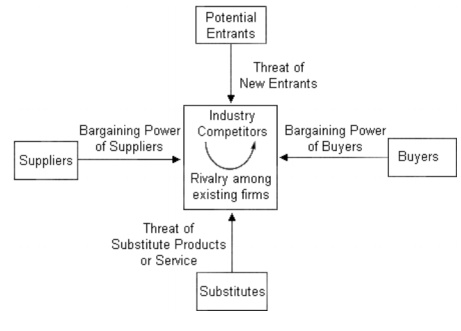Chapter: Business Science : Security Analysis and Portfolio Management : Fundamental Analysis
Industry or Sector Analysis
INDUSTRY OR SECTOR ANALYSIS
The second
step in the fundamental analysis of securities is Industry analysis. An
industry or sector is a group of firms that have similar technological
structure of production and produce similar products. These industries are
classified according to their reactions to the different phases of the business
cycle. They are classified into growth, cyclical, defensive and cyclical growth
industry. A market assessment tool designed to provide a business with an idea
of the complexity of a particular industry. Industry analysis involves
reviewing the economic, political and market factors that influence the way the
industry develops. Major factors can include the power wielded by suppliers and
buyers, the condition of competitors and the likelihood of new market entrants.
The industry analysis should take into account the following factors.

Characteristics of the
industry: When the demand for industrial products
is seasonal, their problems may spoil the growth prospects. If it is
consumer product, the scale of production and width of the market will
determine the selling and advertisement cost. The nature of industry is also an
important factor for determining the scale of operation and profitability.
Demand and market: If the industry is to have good prospects of profitability, the
demand for the product should not be controlled by the government.
Government policy: The government policy is announced in the Industrial policy
resolution and subsequent announcements by the government from time to
time. The government policy with regard to granting of clearances, installed
capacity, price, distribution of the product and reservation of the products
for small industry etc are also factors to be considered for industrial
analysis.
Labour and other industrial
problems: The industry has to use labour of
different categories and expertise. The productivity of labour as much
as the capital efficiency would determine the progress of the industry. If
there is a labour problem that industry should be neglected by the investor.
Similarly when the industries have the problems of marketing, investors have to
be careful when investing in such companies.
Management: In case of new industries, investors have to carefully assess the
project reports and the assessment of financial institutions in this
regard. The capabilities of management will depend upon tax planning,
innovation of technology, modernisation etc. A good management will also insure
that their shares are well distributed and liquidity of shares is assured.
Future prospects: It is essential to have an overall picture of the industry and to
study their problems and prospects. After a study of the past, the future
prospects of the industry are to be assessed.
When the
economy expands, the performance of the industries will be better. Similarly
when the economy contracts reverse will happen in the Industry. Each Industry
is different from the other. Cement Industry is entirely different from
Software Industry or Textile Industry in its products and process.
Related Topics